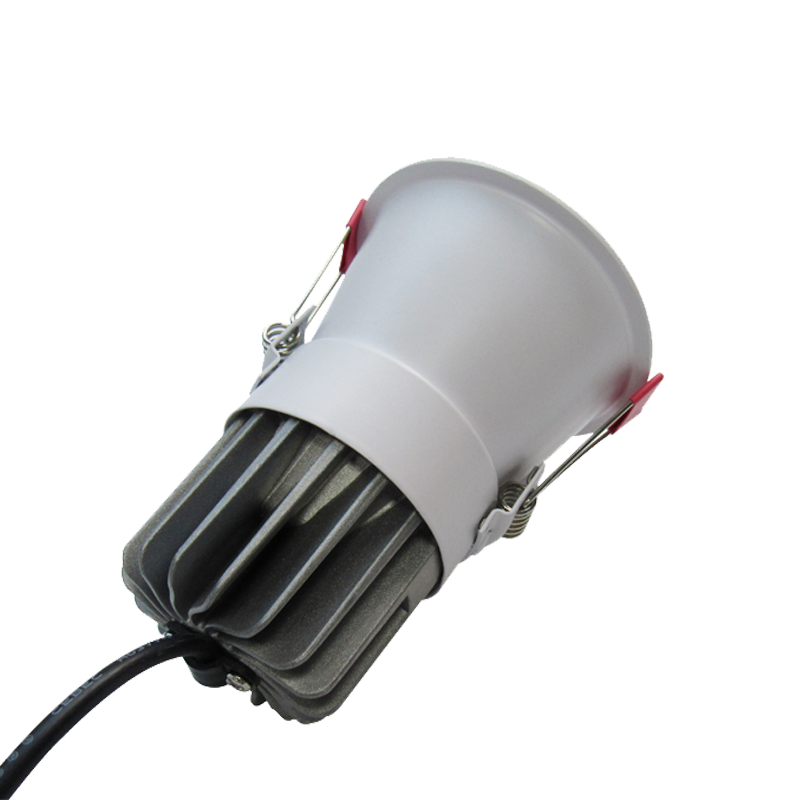LED downlights, additionally known as can lights or recessed lights, are embedded into the ceiling to become a smooth accessory in any type of area. While you could be keen on this smooth look, you may not know every one of the elements that contribute to creating excellent lighting in your home or service.
LED downlights are ideal for large and/or low ceiling rooms.Recessed lights blend into the ceiling, so they don't take up as much space as traditional hanging lights.
Lights can be evenly distributed throughout the room, and because they are embedded, they are discreet enough that you can install more lamps than otherwise. This means that light can reach all corners of the room.
 LED downlights require you to insert holes in the ceiling to install new lamps, or you can refurbish pre-existing ceiling lamps.
LED downlights require you to insert holes in the ceiling to install new lamps, or you can refurbish pre-existing ceiling lamps.
If you do not already have a junction box in the area where you are installing embedded lighting, you will most likely need a new one.A junction box is placed in the ceiling above the light fixture and contains the wires and cables necessary to connect the light to the building's main power supply.
Building and building codes vary, so you must check the insulation contact (IC) level of the downlight to ensure it is compatible with the type of insulation used in your home or business.
For outdoor dark lighting and shower dark lighting, you want to find lamps and bulbs that can withstand dust and water exposure, which can be indicated by protection level (IP).
The correct IP rating reduces hazards by isolating the embedded lighting fixtures from the components.In order to prevent dust and water, IP65 protection grade is recommended.
To avoid fire hazards, do not choose bulbs with more power than recommended.LED bulbs produce more light (lumens) and less energy (watts) than fluorescent or incandescent bulbs.
Choosing LED bulbs allows you to maximize light output and reduce maintenance costs.LED bulbs also keep cool, which will further protect your home or business from fire.
You can control the light beam Angle of the downlight by installing the eyeball or universal joint lamp holder.These features allow you to move and rotate the bulb to shine in the desired direction.
The Beam Angle is determined by the light source and its mounting height.The higher the ceiling, the narrower, and more direct the light.
A beam angle of 60 degrees or more is a wide beam Angle and produces soft light.Anywhere below 60 degrees is a narrow beam Angle, which emits a sharp, direct light, perfect for display.
Color temperature refers to the hue of the color produced by the bulb, which is measured in kelvin. Here is our suggested color temperature list by room:
Living and bedroom: Choose a warm color temperature for these rooms. Yellow is relaxing and perfect for casual occasions.
Kitchen: For best LED Downlights for kitchen, we recommend natural white light. Natural light improves the aesthetics of the kitchen by providing strong light to help you see the cooking and assess the quality of the food without being too harsh.
Offices, reading rooms, and other work areas: For these rooms, we recommend cold white light. Cool colors are gentle and perfect for reading. It can also reduce headaches and improve concentration.
LED downlights come in a variety of sizes and can be adapted to any home or business environment. Small down lamps have a modern feel, while large down lamps conform to traditional aesthetics.
The size and height of the room also influence your choice. In large rooms, it is best to choose larger downlights, as small built-in lights can dwarf and provide insufficient lighting.
The Custom LED Downlight Manufacturer believes that you can determine the number of downlights required in a room by creating a lighting layout. Typically, downlights are placed 1.5 to 2 feet from the wall. You can then determine the amount of space between the downlights by measuring the height of the room and dividing that number by half. For example, in a room with a 10-foot ceiling, you need to leave a 5-foot space between the downlights.
After the drawing, you can determine how many downlights are needed to match the area size of the room. Let's say our room is 10 feet long, 9 feet high, and 9 feet wide. If we multiply the length and width of the room (9x9), we get the square foot of the room (81 ft 2). Once you've mapped the area, you'll see that there's enough room for four downlights, based on 10-foot ceiling height.
So, Where do you plan to install LED downlights?